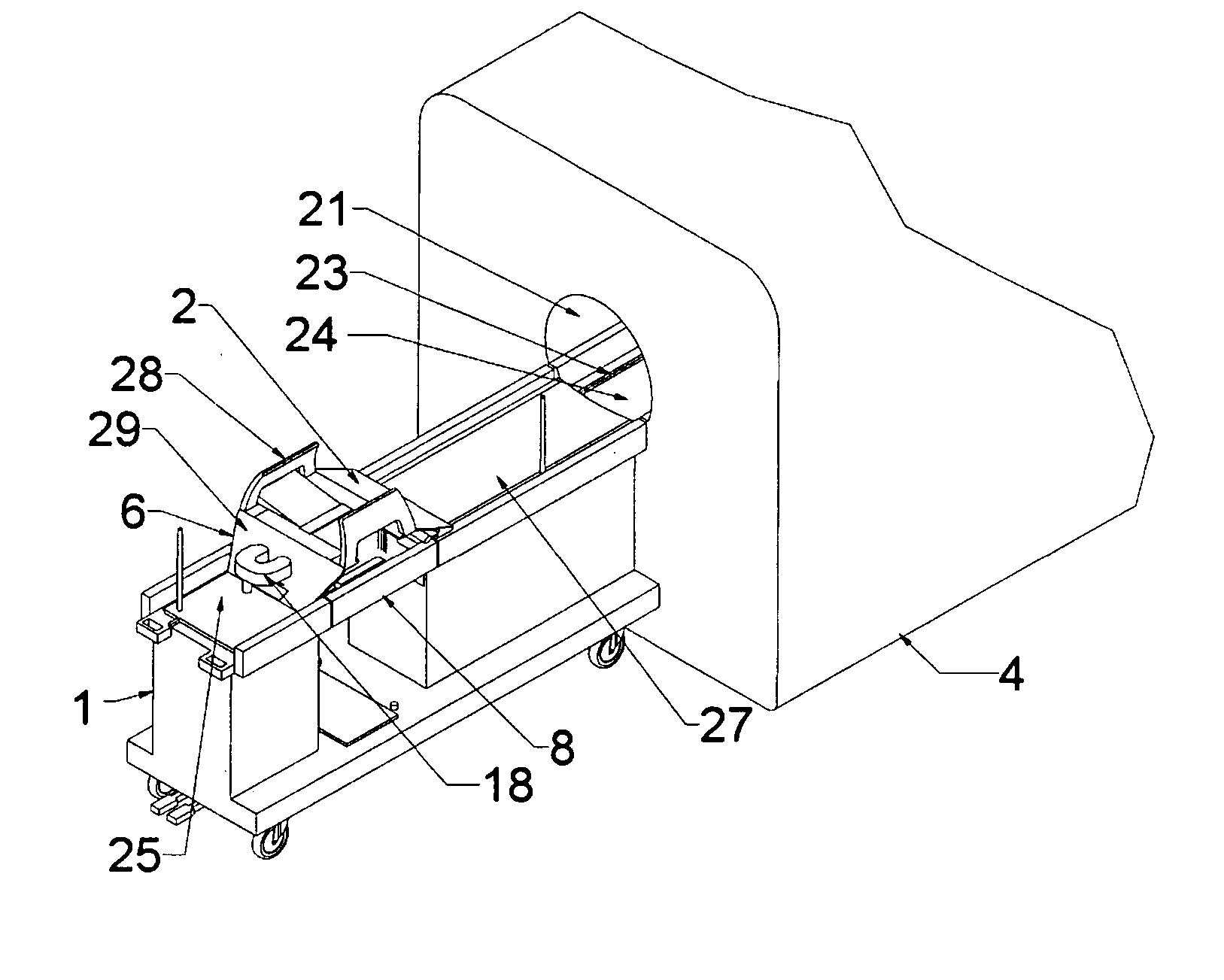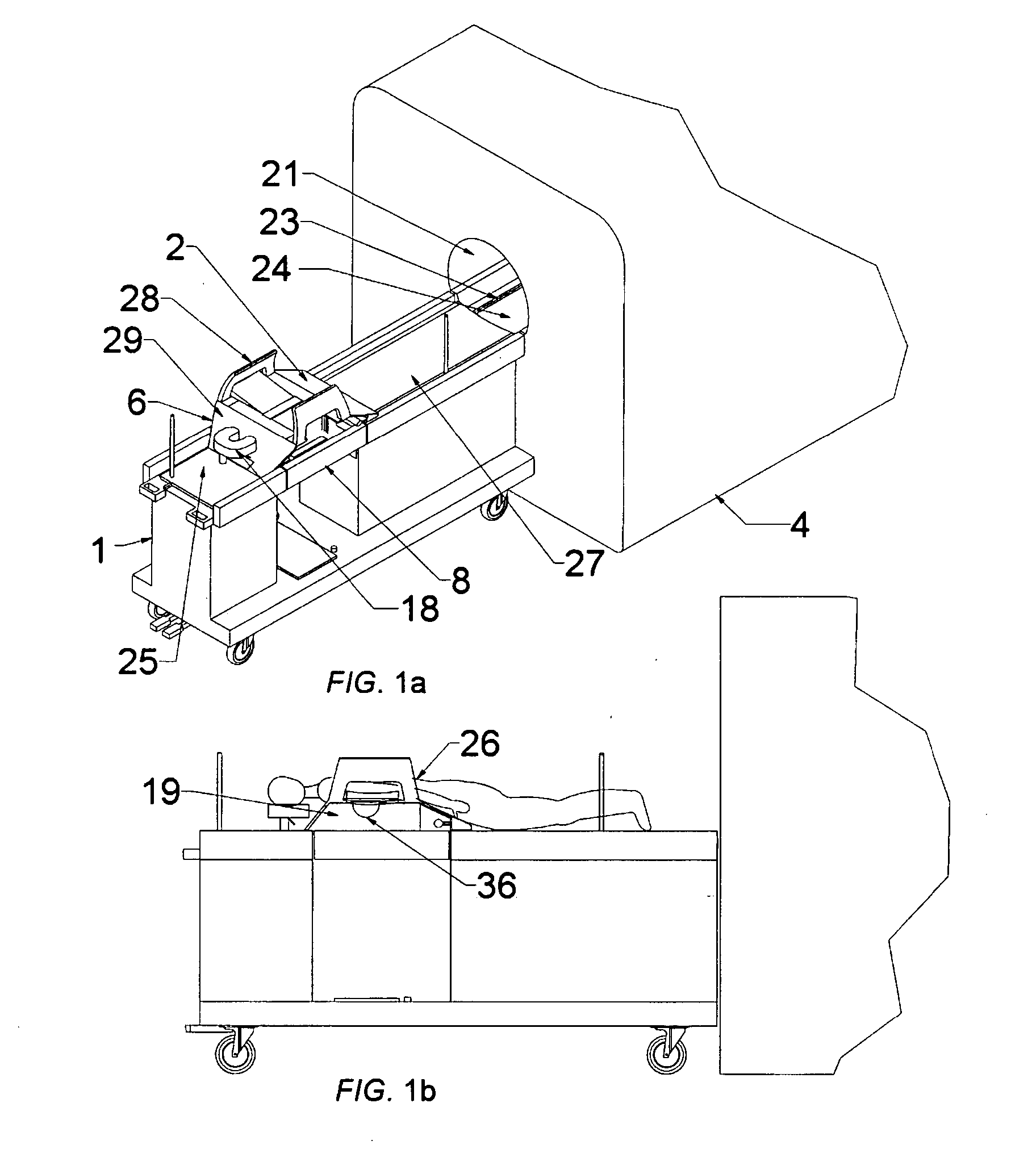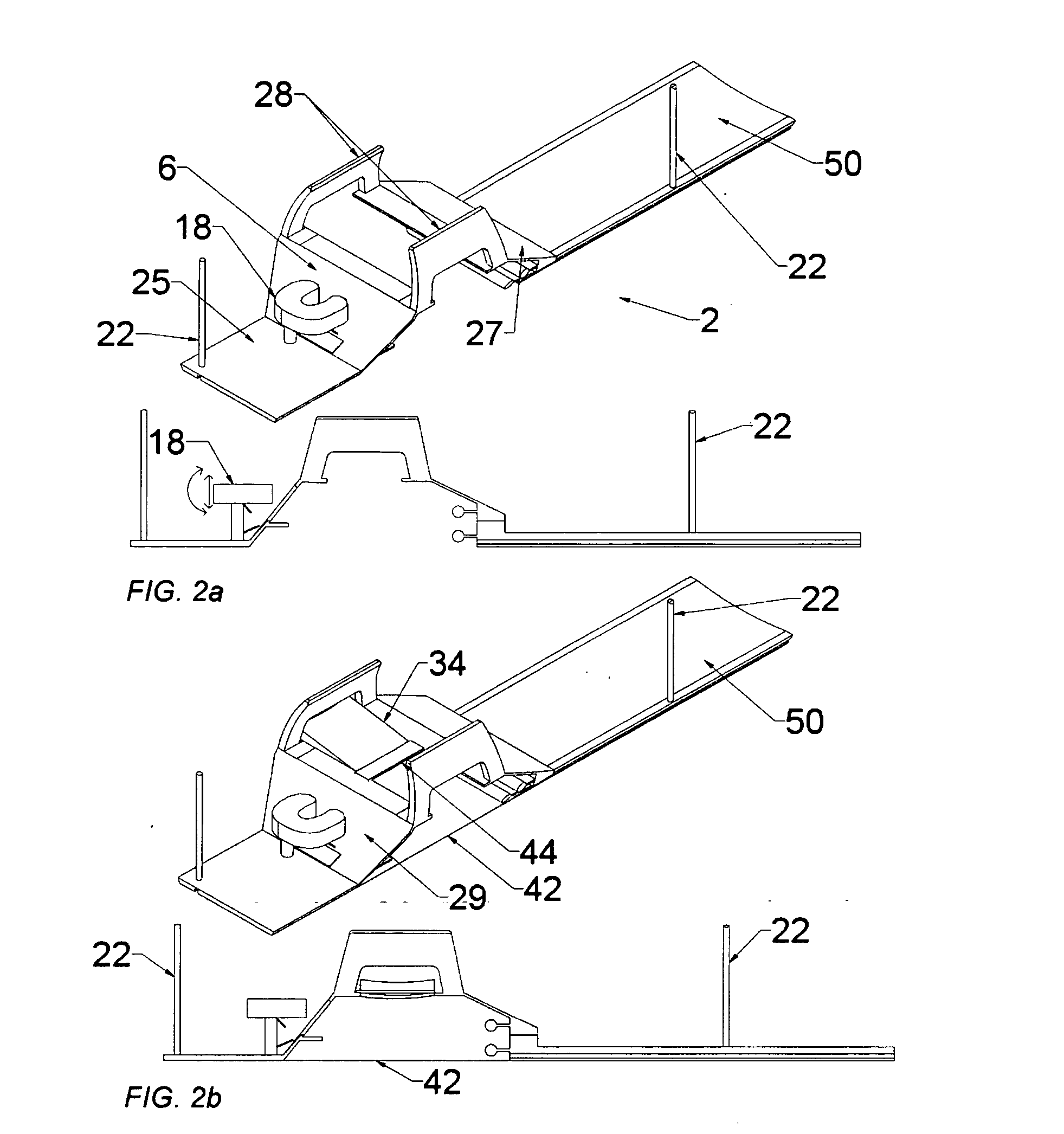Hybrid imaging method to monitor medical device delivery and patient support for use in the method
a medical device and hybrid imaging technology, applied in the field of medical imaging, can solve the problems of limiting the ability to use even real-time imaging data, the original targeting coordinates are no longer correct, and the needle may deviate from the desired path and deflect on the route to the target, so as to facilitate any treatment or diagnostic procedure, the effect of less invasiveness to the patient, and faster speed
- Summary
- Abstract
- Description
- Claims
- Application Information
AI Technical Summary
Benefits of technology
Problems solved by technology
Method used
Image
Examples
example 1
MR-Guided Wire Localization
The use of device guidance techniques to deliver a localization wire or marker to guide surgical intervention is illustrated in the flowchart shown in FIG. 25. The patient is first positioned on the patient support apparatus. The breast of interest is then compressed between two fenestrated compression plates with attached fiducial markers, which are attached in turn to the compression plate locking supports. These fenestrated plates are sterile and can be introduced while the patient is in the prone position. These plates can be moved in the anterior-posterior direction to positions near the chest wall to enable full interventional access to the breast. MR imaging coils are attached to these compression plates. MR imaging is then used to identify the lesion and the fiducial markers. Using this information, the appropriate fenestrated plate aperture and needle guide plug hole are determined in order to position the needle as closely as possible to the de...
example 2
MR-Guided Angulated Breast Biopsy
According to the invention, a core biopsy needle may be delivered to the breast on an oblique trajectory as illustrated in the flowchart shown in FIG. 26. A needle guide plug having straight (medial-lateral) holes of a larger diameter than the biopsy needle, or angulating guide plugs may be used in cases. Patient positioning with fenestrated plates and MR imaging is performed in an identical manner as described under MR-guided wire localization, with the option of implementing the various compression plates indicated in the diagram. Calculation of the needle trajectory is done using compound angles to define the needle trajectory and a goniometer is used to set the orientation of the guide plug. In cases where access to some targets is limited by the fenestration access, the fenestrated plate's position may be altered without moving the breast.
Introducer needle insertion is preceded by producing an incision in the skin at the center of the fenest...
example 3
MR-Guided Marker Placement
The concept of MR-guided biopsy presented in Example 2 can easily be extended to placement of small position markers in the breast, according to the invention. This may or may not be done in conjunction with MR-guided biopsy, or done in conjunction with MR-guided needle localization. This application would take advantage of the fact that a large tissue segment can be accessed through a single incision point (repositioning of the fenestrated plate to provide better access may be required). As shown in FIG. 15, a linear tumor 320 can be delineated by way of a set of markers 326 These markers 326 may be identified after the procedure defining the maximal extent of the tumor. Markers such as endovascualar occlusion coils, surgical clips, or any of the devices as disclosed by Foester et al. in U.S. patent application Ser. No. 2002 / 0193815 A1 may be used. Furthermore, radiotherapy implantable seeds, or local chemotherapy delivery devices may also be distributed...
PUM
 Login to View More
Login to View More Abstract
Description
Claims
Application Information
 Login to View More
Login to View More - R&D
- Intellectual Property
- Life Sciences
- Materials
- Tech Scout
- Unparalleled Data Quality
- Higher Quality Content
- 60% Fewer Hallucinations
Browse by: Latest US Patents, China's latest patents, Technical Efficacy Thesaurus, Application Domain, Technology Topic, Popular Technical Reports.
© 2025 PatSnap. All rights reserved.Legal|Privacy policy|Modern Slavery Act Transparency Statement|Sitemap|About US| Contact US: help@patsnap.com



